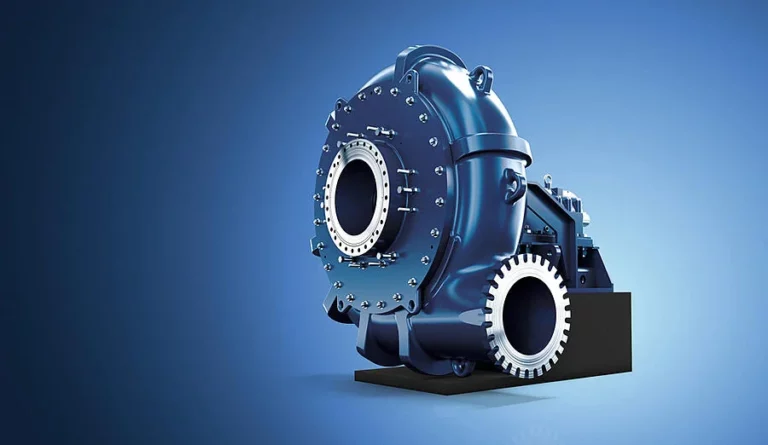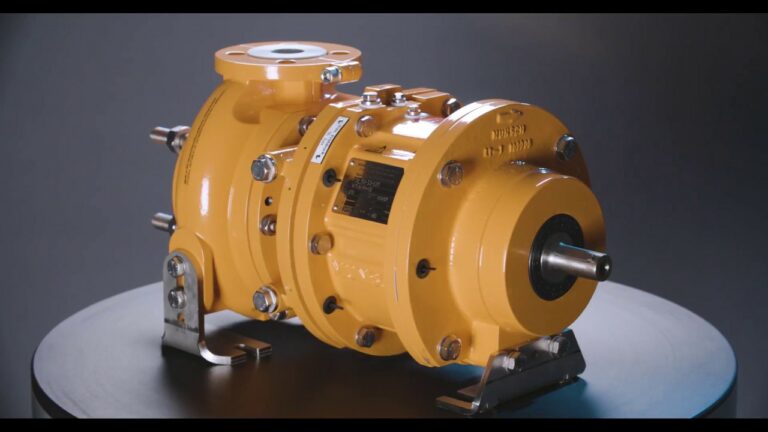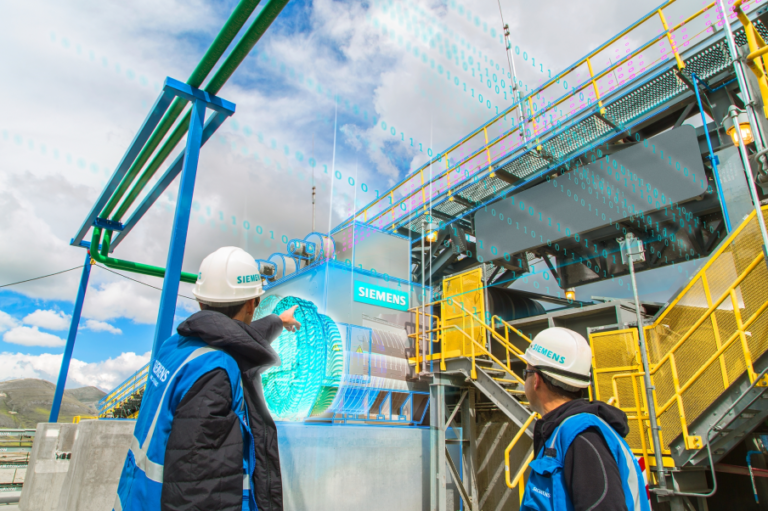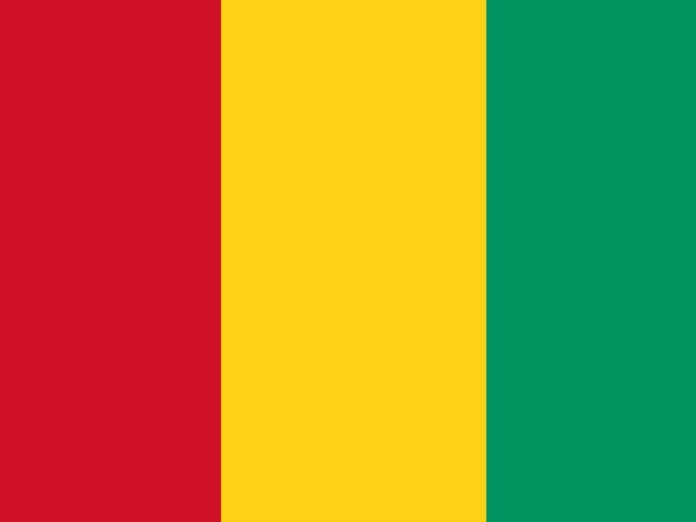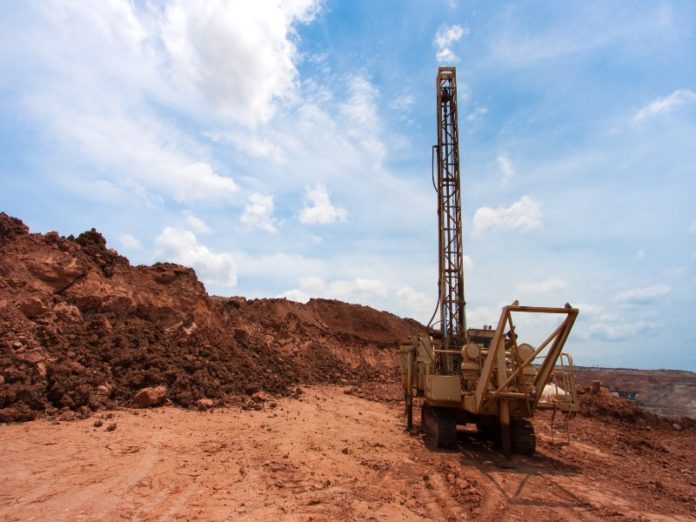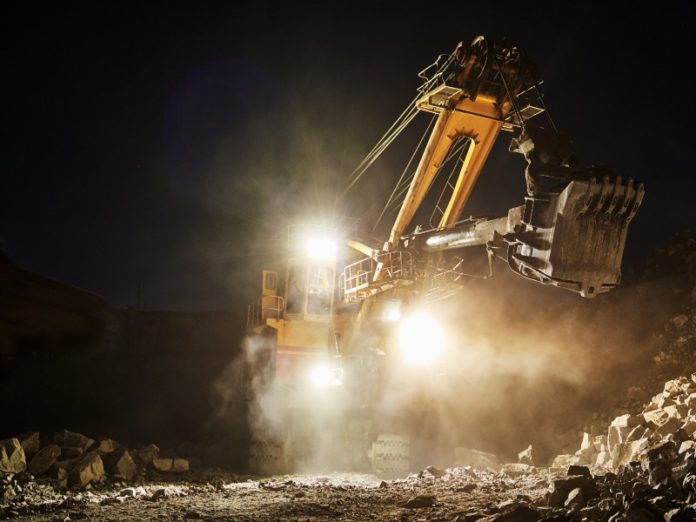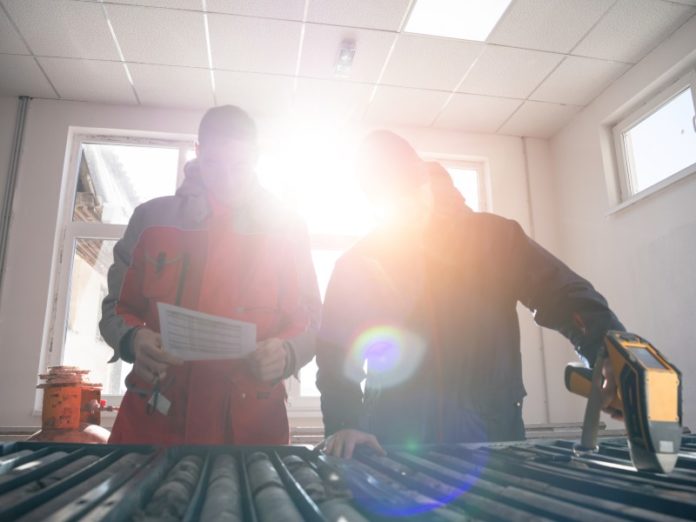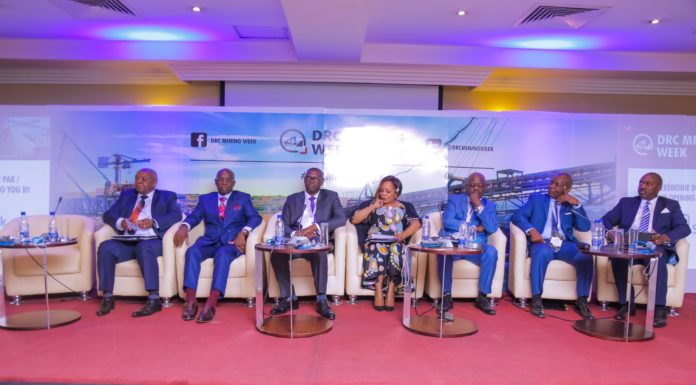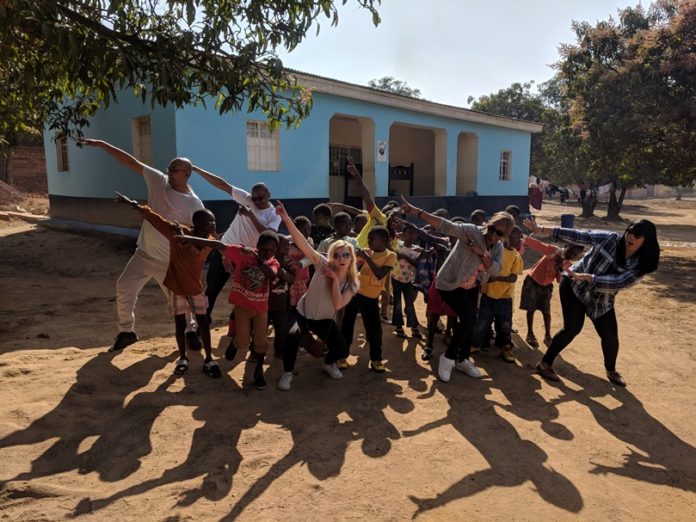Between hope and despair (A tale of two cities)
Address by Nolitha Fakude: Chairperson of Anglo American’s Management Board in South Africa and President of the Minerals Council South Africa at Joburg Indaba
Colleagues, we have come together during a time when our industry and country are at another crossroads, which I might describe as the intersection between hope and despair – a tale of two cities as described by the author Charles Dickens.
When the news of the Jagersfontein tragedy broke a few weeks ago, one of our worst fears as an industry came to life right here on our doorstep. This tragedy left a family without their loved ones and considerable destruction and the displacement of many people in its wake. A community’s life has been disrupted in ways we cannot imagine.
As the industry, we rallied to support relief efforts, and on behalf of the Minerals Council, I want to thank you for this support. Our collective efforts signalled not only our ability to mobilise quickly in response to a crisis but also our genuine concern for the well-being of communities. Our immediate and longer-term humanitarian interventions through partnerships with recognised and credible aid organisations are underway in Jagersfontein.
While the effects of the devastation on both people and the environment continue to be assessed, scrutiny over the appropriate levels of regulation, and our responsibilities as an industry, have come into sharp focus. Both government and the industry see this as a critical opportunity for all of us to reflect on what we can do better and close the gaps where these are glaringly obvious.
As an industry, we are held to a plethora of legislations and regulations as part of our mining rights and water use license authorisation requirements.
In addition, we are continuously aligning ourselves with best practices and global standards to strengthen our monitoring and maintenance approach to our tailings facilities. Over the past few months and years, in particular, several mining companies belonging to the Council have been hard at work reviewing the integrity of their tailings facilities.
This is reassuring because it demonstrates our commitment to ensuring that we proactively identify any areas of improvement that we may find. In addition to this, the ICMM standards on tailings, namely Global Industry Standard on Tailings Management (GISTM) – which includes inputs from the Minerals Council – continue to be the global standard. Several Minerals Council members have committed to applying the ICMM’s GISTM (Global Industry Standard on Tailings Management) in addition to the national standards and regulatory requirements.
Furthermore, the Council has also made extensive inputs to the review of the SANS standards on mine residues and tailings to align this with the ICMM’s GISTM. The imperative is clear: we must work together to ensure that we meaningfully protect people, and our industry, from future calamity. Simply put, anything less than every tailings facility in our industry being responsibly managed is just not good enough. Where no clear ownership can be identified, the regulators must ensure a transparent process is followed to safeguard these facilities.
While we continue to deal with the far-reaching security challenges plaguing our operations, the criminality associated with illegal mining is also escalating.
Turf wars between various syndicates are known for their violence, but now their activities are impacting the very freedom, safety, and security of our communities. Our hearts collectively sank in July when eight women were brutally violated in a Krugersdorp mine – a crime linked to illegal mining.
What is extremely worrying is that community members are retaliating with violence. In August, six mutilated bodies of men believed to be part of a zama-zama gang were discovered alongside a highway in Bosmont, allegedly murdered by community members.
These organised criminal syndicates are one of the biggest threats to South Africa’s mining industry, posing a real risk to employees, their families, mining operations and the environment. Over the years, the mining industry has been asking for this issue to be urgently addressed by the South Africa Police Services (SAPS).
The need for a specialist mining police task force to combat and prevent illegal mining and the other many security violations affecting the mining industry is long overdue.
These headlines that I’ve just referred to have also sparked intense public debate about whose task it is to ensure the safe closure of disused and abandoned mines. (These are under the remit of the Department of Mineral Resources and Energy, which has noted it has limited funding to undertake this massive task.)
There are 6100 derelict and ownerless mines, the majority of which were abandoned long before the first fully democratic elections in 1994 and the implementation of the MPRDA in 2004, when tougher rehabilitation and environmental conditions were imposed on mining companies to prevent mistakes of the past.
We need innovative thinking when it comes to addressing these legacy operations, and we as the industry, are ready and willing to work with the DMRE to expedite the closure and rehabilitation of derelict and ownerless mines, especially when they are adjacent to existing operations and are used to invade fully operating mines.
Through the platform of the Minerals Council Women in Mining Leadership Forum, we have witnessed the power of shared focus and purpose in the last three years. As an industry we have an opportunity to coordinate our efforts and build on foundation measures that have been identified to ensure that not only do we deal with gender-based violence (GBV) inside the mine gate but as well can collaborate with external partners and stakeholders in doing this.
There are several examples of advocacy and education on GBV from our industry – such as Exxaro’s 100-day challenge, which recently played a crucial role in educating employees on the complexity of GBV while outlining and strengthening the support and care systems available to them. The Sibanye Stillwater Unconscious Bias training campaign and the Impala Platinum initiative on gender equality in the workplace are some of the positive steps that the industry is taking.
In addition, the Minerals Council Women in Mining Leadership Forum is looking into a programme initiated by Anglo American, Sedibelo Platinum and Fraser Alexander, among others, in the hopes of creating a shared “Living with Dignity” framework across the industry that all can contribute toward, in collaboration with the NPA’s sexual offences and community affairs unit (Thuthuzela Care Centres), thus creating safe spaces that will offer one stop facilities for survivors to medical, legal and psycho-social support.
Eradicating the scourges that bedevil the lives of women in our industry needs not just words and policies, but concerted action and intervention from mining companies at the highest level, and the participation of all stakeholders and social partners to drive the message home that there is zero tolerance for GBV, sexism, racism and bullying at our operations.
Another key priority area is to look at the full economic empowerment of women in mining, including their career progression and as well as their participation in the full supply value chain and procurement opportunities. The mining industry continues to make progress against our gender representation goals of 30% women representation by 2030 at all management levels across the South African mining industry.
Women CEOs in mining in 2021 participated in a pledge of more than R60 million to the GBVF Fund as part of the national strategic plan set up by the Presidency. The GBVF Fund will complement initiatives that the mining industry undertakes to partner with across civil society and NGOs in dealing with the gender-based violence within mine host communities.
Furthermore, through WECONA (Women’s Economic Assembly Conference), established to deal with economic empowerment challenges faced by women in general, the Women in Mining Leadership Task Team led by Dr Thuthula Balfour will explore in the next 12 months how best women within our communities can participate in available economic opportunities within mining operations. Where teams across the various companies will be working very closely with Dr Thuthula and the Women Economic Assembly to identify sector value chains that can be leveraged for women empowerment.
I urge you all to participate in this initiative as I know many of our companies have got clear procurement programmes for host community participation and, especially for small and medium enterprise development. This will go a long way towards transformation beyond compliance.
A tale of two cities:
Choosing hope over despair – mining’s prospects in South Africa
By choosing hope over despair, I see our future, not as something out of our control, but as something that we can shape for the better – for the sake of our people, our industry, and through our collective efforts. And there are already signs of this.
With climate change and the global energy transition well underway – it is many of the metals and minerals which we produce right here in South Africa are required to support this transition. And our abundant sun and wind resources give us yet another wonderful opportunity to produce and benefit from renewable energy sources. Our members have a pipeline of 6.5GW of sustainable energy projects worth more than R100 billion, and Roger Baxter, CEO of the Minerals Council, will speak about these later today.
But the question we hear others ask of us remains: will South Africa’s policymakers, and indeed the mining industry, organise themselves enough and in time to really benefit from this enviable position? If we do, then we truly have the power and potential to be the lighthouse industry for South Africa.
Not only would we catalyse the much-needed growth and socio-economic development that our country so desperately needs, but we would also create a pathway and model for other industries to follow suit while helping South Africa’s own decarbonisation journey as we, together, fight global climate change.
This requires a shift in our thinking and ways of working together: away from who we are to what we must become. The biggest opportunity we have as an industry is to help the world to transition to a net-zero carbon world.
Blessed with rich natural resources endowment, the metals and minerals mined from South African soil will play a critical role in enabling this global transition. However, having said this, our present investment trends suggest that we, as an industry in South Africa, are not adequately positioning ourselves to take full advantage of the opportunities that net-zero transition presents. For example, we are all acutely aware that the last significant spending on exploration in South Africa occurred in 2003. Presently, it is estimated that our overall exploration expenditure sits at a mere 0,75% spent globally on exploration last year.
Many factors are impacting our ability and confidence to invest, which include complex regulatory framework. Policy support, regulatory certainty on energy production and efficient robust state-owned institutions are all essential – and so too is the rule of law, security, and the rooting out of corruption.
It is critical for the government to allow the private sector to participate fully in revitalising the potential of key infrastructure in water, energy, and logistics. Partnerships between the public and private sectors are essential to unlock our full mineral potential to create jobs, wealth, and opportunities for future generations.
Within our locus of control, however, is also the willingness to truly collaborate – bringing together labour, government, business, communities, and civil society to enhance our confidence, support the country’s investment prospects and secure a just energy transition. In this regard, yesterday, Anglo American and EDF Renewables announced their ground-breaking partnership agreement incorporating a new joint venture company, Envusa Energy, that will develop a regional renewable energy ecosystem in South Africa.
The agreement includes the launch of a mature pipeline of six hundred megawatts of wind and solar projects and is a major first step towards the generation of between three to five gigawatts of renewable energy through the ecosystem, meeting Anglo American’s projected operational power requirements in South Africa, and reducing its carbon emissions significantly as part of its decarbonisation commitments towards net zero.
We see the construction and development of this ecosystem as a driver of economic development within South Africa’s renewable energy sector, supporting the country’s broader just energy transition.
The ecosystem also illustrates how mining can serve as a springboard for unlocking national growth and development potential. Across our industry, many other companies are on the same path – signalling a commitment to not only making the energy transition real but just and inclusive, too.
The energy transition is not going to be sustainable or just if we do not invest in advancing the economic inclusion of women and young people. I believe that as the energy transition gains pace, we as an industry can play a leading role in building a more collaborative and inclusive economy: one that places people and the principle of shared prosperity at the heart of development.
No one must be “left behind” during this transition. This is mining’s role as a lighthouse industry: finding new ways and using our convening power to create opportunity and grow the economies of the regions where we operate.
Simultaneously, at Anglo American we have partnered with the Department of Cooperative Governance and Traditional Affairs in South Africa to develop the Municipal Capability and Partnership Programme, laying the foundation for an adaptive approach in working together to improve service delivery and ultimately contribute to improved quality of life of our communities, where millions of people will experience the effects of the energy transition. Ultimately, this transition is not only about energy – but about people too.
Our collective task
The people of South Africa will not forgive us if we miss an era-defining opportunity to build a new and inclusive economic sector that places people and the principle of shared prosperity at the heart of development. And we can do this through the opportunities that the energy transition provides us.
The mining industry is ready to partner with the government and other business sectors to co-create a sustainable and inclusive socio-economic development roadmap aligned to global ESG principles, that will optimise value for all stakeholders.
While the Mining Charter has been clarified as a policy, rather than law, our industry remains ever committed to the spirit of transformation, and to continue the sustainable and impactful initiatives that result in true economic value creation and go beyond mere compliance. We need to engage each other with trust and goodwill for this to be a reality. By working together on shaping the future of this partnership, I believe that we can help set up the foundations for a new socio-economic reality, one where mining can play a leading and catalytic role.
Building an inclusive economy will only be successful if it is premised on collaborative partnerships between business, government, and labour. We can start by placing a priority focus on improving energy security, infrastructure development (water and ICT), logistics (rail, roads, and ports), and dealing decisively with crime and issues of safety and security, as part of our mutual commitment to secure the future of South Africa.
Right now, we have several opportunities that could unlock inclusive economic growth and drive greater social cohesion that we can all rally behind. This should be our singular obsession as South Africans.
This is our opportunity for a great reset. The 60-million people of this great nation all have hopes for a better tomorrow — hopes that we can help to fulfil by working together. Despite our national challenges, we owe it to ourselves to seize this moment and start working towards the great reset our nation deserves, without delay.
In closing, I believe that our choices as an industry are clear:
- We must choose hope over fear (the high road rather than the low road).
- We must reject passivity and cynicism when it comes to the prospects of our industry and country.
- We must choose to see mining – despite its complex legacy and history – as an industry that is changing – and has changed – and that is an enabler of a more prosperous, sustainable, and equitable future.
At Anglo American, we choose to see South Africa as a country that is alive with possibilities, not just for a few, but for all. However, we know that this is not going to happen by chance. There is much work to be done. There has never been a better time to roll up our sleeves to come together to bring this hope to reality but also in a pragmatic fashion.
We must believe that progress is possible because the path of any nation is rooted in progress, not perfection. Charles Dickens’ words from A Tale of Two Cities ring true today, now more than ever for us as a country.
“It was the best of times; it was the worst of times;
“It was the age of wisdom; and it was the age of foolishness;
“It was the epoch of belief; it was the epoch of incredulity;
“It was the season of light; it was the season of darkness;
“It was the spring of hope, and it was the winter of despair;
As a country, we stand at a crossroads. We can choose which city we want to inhabit – one of hope or the other of despair. I believe that we should choose the path of hope, because this path provides us with the opportunity to truly build a better life for all.


